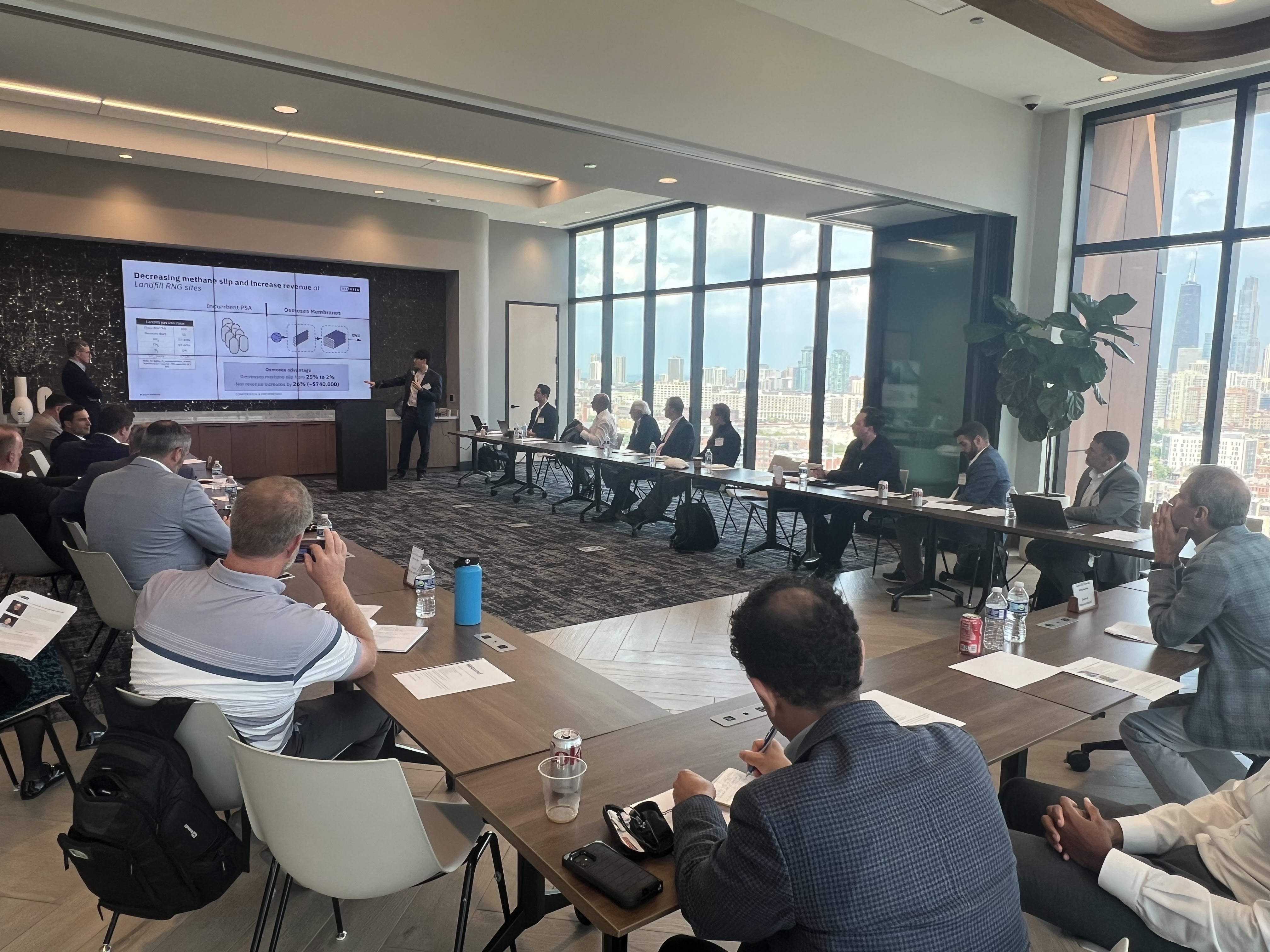
At Energy Capital Ventures®, we view renewable natural gas (RNG) as a cornerstone of the Green Molecules® portfolio, offering immediate infrastructure compatibility and proven emissions reductions across transportation and industrial applications. Its ability to utilize existing pipeline networks while delivering carbon-negative fuel profiles makes it uniquely positioned within the evolving policy framework.
The recently enacted One Big Beautiful Bill Act (OBBB) brings both clarity and complexity to RNG’s market landscape. Rather than providing blanket support, the legislation tightens compliance requirements under key programs like RINs and LCFS while extending critical incentives through 2029. The result is a more performance-driven environment that rewards operational excellence and strategic positioning over scale alone.
For stakeholders advancing RNG development, OBBB serves as both opportunity and filter. It reinforces the sector’s growth trajectory through extended 45Z credits and improved transferability, while demanding greater precision in feedstock sourcing, emissions accounting, and regulatory compliance. The winners will be those who can navigate this refined landscape with technical competence and financial discipline.
The One Big Beautiful Bill Act (OBBB), signed into law on July 4, 2025, represents a significant recalibration of federal energy policy, building on and amending key provisions of the Inflation Reduction Act (IRA). While many renewable energy credits face restrictions or accelerated phase-outs, RNG emerges as a relative beneficiary under the new framework.
OBBB’s approach centers on three strategic priorities:
For the renewable natural gas sector, OBBB introduces several key changes:
Unlike other segments of the energy transition facing tighter incentives, RNG stands out for its dual advantage: waste mitigation and infrastructure readiness. That positioning fuels strong federal backing and market momentum heading into 2025.
Among OBBB’s most significant provisions for the RNG sector is the two-year extension of the Section 45Z Clean Fuel Production Credit through 2029, coupled with important structural modifications that favor domestic biogas production.
Pathway-Specific Credit Enhancements:
Under the revised 45Z framework, RNG producers can access performance-based credits up to $1.00 per gallon equivalent, determined by lifecycle greenhouse gas emissions intensity. The legislation introduces pathway-specific improvements:
This pathway differentiation reflects growing regulatory sophistication around feedstock-specific carbon intensity calculations, rewarding projects with verifiable low-emissions profiles based on lifecycle analysis.
New Geographic Limits on Feedstock:
OBBB introduces meaningful changes to feedstock eligibility that will reshape RNG supply chains:
Credit Transferability Boosts Project Finance:
The updated credit transferability provisions under OBBB significantly improve RNG project economics by:
Early market indications suggest transferable 45Z credits are trading at 85-90% of face value, providing immediate cash flow benefits for operational projects.
The Renewable Fuel Standard (RFS) program continues under OBBB with important modifications that affect RNG’s participation in RINs markets. While broader biofuels policy faces uncertainty, RNG maintains favorable positioning due to its superior carbon intensity profile and domestic production advantages.
D3/D5 Credit Value Drivers:
RNG projects continue generating valuable D3 (cellulosic biofuel) and D5 (advanced biofuel) RINs, with several factors supporting pricing stability:
Domestic Supply Chains Gain Ground:
OBBB’s feedstock restrictions create both challenges and opportunities within RINs markets:
California’s Low Carbon Fuel Standard (LCFS) remains a critical revenue driver for RNG projects, with recent amendments taking effect July 1, 2025, creating both opportunities and constraints for sector participants. 2025
Regulatory Updates:
The updated LCFS regulation introduces several key changes affecting RNG:
Credit Prices and Market Trends:
LCFS credit values have responded to the regulatory updates with measured optimism:
2040 Phase-Out: Timeline Still Favors Development:
While CARB’s proposed 2040 phase-out of RNG crediting under LCFS creates long-term uncertainty, the practical timeline provides substantial runway for current development cycles. Projects achieving commercial operation through 2030 can expect 10+ years of LCFS revenue contribution, sufficient to underwrite most financing structures.
The North American RNG market demonstrates remarkable resilience and growth momentum, with OBBB’s policy framework supporting continued expansion across multiple segments.
Production and Infrastructure Scale-Up:
Recent market data indicates accelerating development across the sector:
More Feedstocks, More Regions:
Market development increasingly focuses on feedstock optimization and geographic diversification:
While much of the policy conversation around RNG has centered on traditional anaerobic digestion and upgrading technologies, OBBB’s performance-based framework also opens space for emerging innovations that can meet or exceed efficiency benchmarks through alternative means. Three Energy Capital Ventures portfolio companies—Osmoses, CarbonQuest, and Vertus Energy—are advancing biogas production, monetization pathways, and upgrading models that align with the core drivers of OBBB: cost-effectiveness, infrastructure leverage, and superior emissions performance.
Osmoses: Low-Energy Biogas Upgrading
Osmoses has developed breakthrough membrane technology that has the potential to dramatically improves biogas upgrading efficiency, addressing one of the most energy-intensive steps in RNG production. The company’s patented polymer membranes achieve unprecedented flux and selectivity for gas separation, reducing energy consumption by up to 90% compared to traditional upgrading processes.
CarbonQuest: Monetizing CO₂ as a Revenue Stream
CarbonQuest offers a unique downstream opportunity for RNG producers by enabling the on-site liquefaction and sale of captured CO₂—a traditionally vented byproduct. By owning and operating the liquefaction systems, CarbonQuest turns what was once waste into a direct EBITDA contribution, adding pure profit to RNG facilities.
Vertus Energy: Higher Yields, Faster Digestion
Vertus Energy’s BRIO technology addresses the production side of the RNG value chain, offering advanced bacterial control systems that dramatically accelerate biogas generation from organic feedstocks. Recent commercial demonstrations show the technology can increase methane yields by up to 60% while processing feedstock three times faster than conventional anaerobic digestion. What sets BRIO apart is its retrofit capability and feedstock flexibility:
Under OBBB’s domestic feedstock preference and enhanced pathway recognition, Vertus Energy’s model aligns with policy priorities while delivering measurable performance improvements that support higher credit values under both 45Z and RINs programs.
Momentum Builds at the ECV RNG Roundtable

The ECV team recently hosted an exciting and informative RNG Roundtable, bringing together a dynamic mix of stakeholders across the Green Molecules® ecosystem. The event featured engaging discussions with all of our Limited Partners, as well as industry leaders including Prodeval, Arco/Murray, Amp Americas, and several of our Strategic Advisors. Portfolio companies Vertus Energy and Osmoses participated in the conversation, sharing forward-looking insights on how their technologies can help advance the future of RNG. The dialogue continued well into the evening over a cocktail reception and dinner, with strong momentum and follow-up among attendees to explore new partnerships and accelerate the role of RNG in the broader Green Molecules® landscape.
The One Big Beautiful Bill reshapes the renewable natural gas opportunity landscape through enhanced but more selective federal support. By extending 45Z credits, improving transferability, and maintaining RINs program stability, OBBB provides a foundation for continued sector growth while demanding greater operational and regulatory sophistication.
At Energy Capital Ventures®, we view OBBB as validation of the Green Molecules® approach to infrastructure-compatible decarbonization. RNG’s ability to operate within existing systems while delivering measurable emissions reductions positions it favorably within the new policy framework, particularly for projects that can demonstrate feedstock security and regulatory compliance excellence.
The next phase of RNG development will favor developers who can integrate feedstock strategy, technology selection, and market participation across multiple revenue streams. Those who master this complexity will find substantial opportunities within OBBB's refined framework.
In our next newsletter, we'll examine how OBBB affects carbon capture and utilization projects, exploring the implications for industrial decarbonization and the evolving 45Q credit structure.